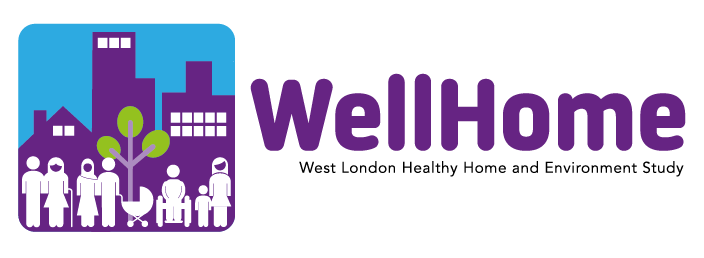A community-based approach to investigate how indoor air pollution impacts our health
BlogWritten by
Dr Diana Varaden, MRC Centre for Environment and Health, Imperial College London
“Residents expressed the view that an indoor air pollution study should address the intrinsic question of “whether they should let the pollution in or let the pollution out?””
While there is the implicit expectation that buildings protect us from outdoor air pollution, harmful air pollutants can also be present indoors. Indoor air pollution can be the result of sources inside the home such as smoking, cleaning, open fires, gas cooking, or poorly maintained gas appliances, as well as outdoor air pollution that infiltrates into the building. However, even though we spend approximately 90% of our time indoors, the overwhelming majority of research on this topic is based on measurements and models of ambient (outdoor) air pollution.
The dearth of indoor air pollution research can be partially attributed to the challenges associated with conducting research in settings that require active public participation, acceptance and inconvenience, such as homes, schools and community buildings. Our homes are personal spaces, where we set the rules. Our behaviour, and that of our families or housemates, is individual and dictated by a wide range of physical, emotional, cultural and financial considerations. This individuality makes it challenging to conduct research in residential spaces without artificial constructs that limit the applicability of research outcomes. When conducting indoor air pollution research, investigators are ultimately dependent on residents’ willingness to allow monitoring equipment into their homes. And it is exactly this, the trespassing of the boundaries of what people consider a ‘safe personal space’ which may hinder people’s willingness to consent to participate in indoor air quality research. Moreover, public understanding and awareness of indoor air pollution is generally low compared to outdoor air pollution. This is partly a reflection of information dissemination and public engagement in this area.
Working in partnership with the local community, our new research project, the West London Healthy Home and Environment Study (WellHome) funded by UKRI through the SPF Clean Air Programme, will focus on investigating the quality of air inside and outside a range of 100 homes in West London to a) identify what are the dominant air pollution exposures across the indoor:outdoor air pollution continuum within vulnerable and diverse urban communities including asthmatic children and to b) assess whether behavioural changes can demonstrate a measurable reduction in exposure to these risks and accordingly improve health outcomes.
The WellHome study has been co-designed with the local community from the outset. During 2020, we carried out a pilot study funded through the UKRI Citizen Science grant scheme (“My house, my rules: Co-designing residential air pollution research”) to ensure that our proposed study design was acceptable, appropriate, and deliverable. By involving residents in the research process from the outset, we were able to co-design a research methodology that benefited from local knowledge and insight into community dynamics. Interestingly, residents expressed the view that an indoor air pollution study should address the intrinsic question of “whether they should let the pollution in or let the pollution out?”, demonstrating an awareness of both indoor and outdoor sources. Other feedback included prioritising families with young children and marginalised communities, suggesting an incentive scheme to maintain participation, encouraging the use of local ‘ambassadors’ and local partners as a trusted face for the study, requesting the feedback of results, and expressing a desire for positive change for the area and its residents.
Equipped with these insights and following a community-based approach, the WellHome multidisciplinary team will provide community members with opportunities to be actively involved in the design and implementation of this research over the next three years. This is expected to create a sense of collective ownership for the residents involved in the study, ensuring that the outcomes meet both the researchers’ aims, and local residents’ needs and expectations. Through educational campaigns and engagement activities, residents will have the opportunity to learn about air pollution, while developing strategies for addressing current knowledge gaps, thereby enhancing the citizens’ ability to gather the knowledge they need to not only understand air pollution, but also take action to reduce their own exposure to harmful pollutants.
The results from the WellHome study will improve our understanding of indoor air pollution and thus, identify feasible and effective remedial measures to help reduce exposure and associated health risks.

@StudyWellHome